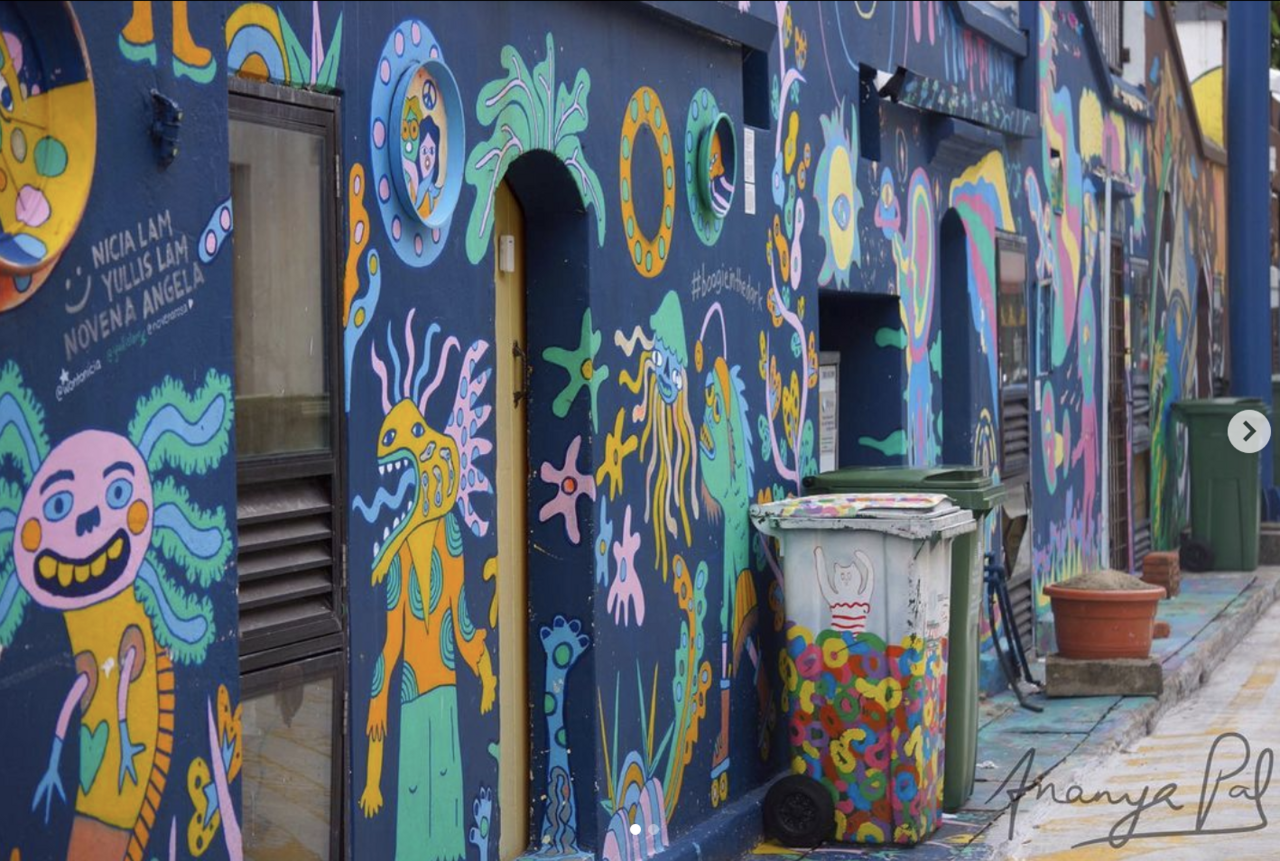Prior to beginning my research, my original question was the following: How does mural art create social/cultural/political/geographic boundaries in the urban fabric of Singapore and how do these boundaries interact with the proposed political and legal narratives of The Singaporean Government? Upon conducting my literature review, I realized this question was already investigated by an associate professor from the National University of Singapore. This provoked me to ask more questions about the literature I was reading–where were the gaps? What questions were proposed but left unanswered? Upon combing through various literature and urban studies journals, I realized that no one has answered the following question: What are the differences in the function, content, and impact of mural art in Singapore’s designated historic neighborhoods and residential neighborhoods?
With qualitative and incredibly nuanced research like this, I have realized that it is hard to pin down an argument that concisely describes a relationship between all the stakeholders involved. I have always had this problem while in the initial stages of any research, and part of what holds me back from getting to the argument-development stage is my desire to follow an order in completing research. But as our research coordinators said in our orientation meetings, research is not linear. I believed this to be true, but I didn't realize how non-linear the process could get. Instead of following the order, I chose to embrace the non-linearity. Non-linearity provoked me to keep a document where I wrote down every single thought I had related to my project, which was then compiled into writing full-scale reflections, and answers to questions I had posed to myself. I had never done this in any other research work because it didn't follow that typical research order. But it was this part of non-linearity that helped me develop a substantial argument, and even pushed me to discuss my "musings" with the very professor who wrote most of the works from my literature review.
This six-week research residency has been a whirlwind but in the best way possible. I have learned how to attack research in a way that is arguably more exciting than I could have imagined. In the next few weeks, I will be working on my paper and conducting interviews with mural artists and residents of Singapore to get a deeper insight into the works I have examined. I would like to thank the Laidlaw Coordinators at Barnard for offering really actionable guidance and support, especially for someone who has not done research in a super official capacity. l would also like to thank the friends I have made during these six weeks-- you all have encouraged me to expand my way of thinking and way of going about things and I couldn't be more happy to have made a community with you all.

Please sign in
If you are a registered user on Laidlaw Scholars Network, please sign in